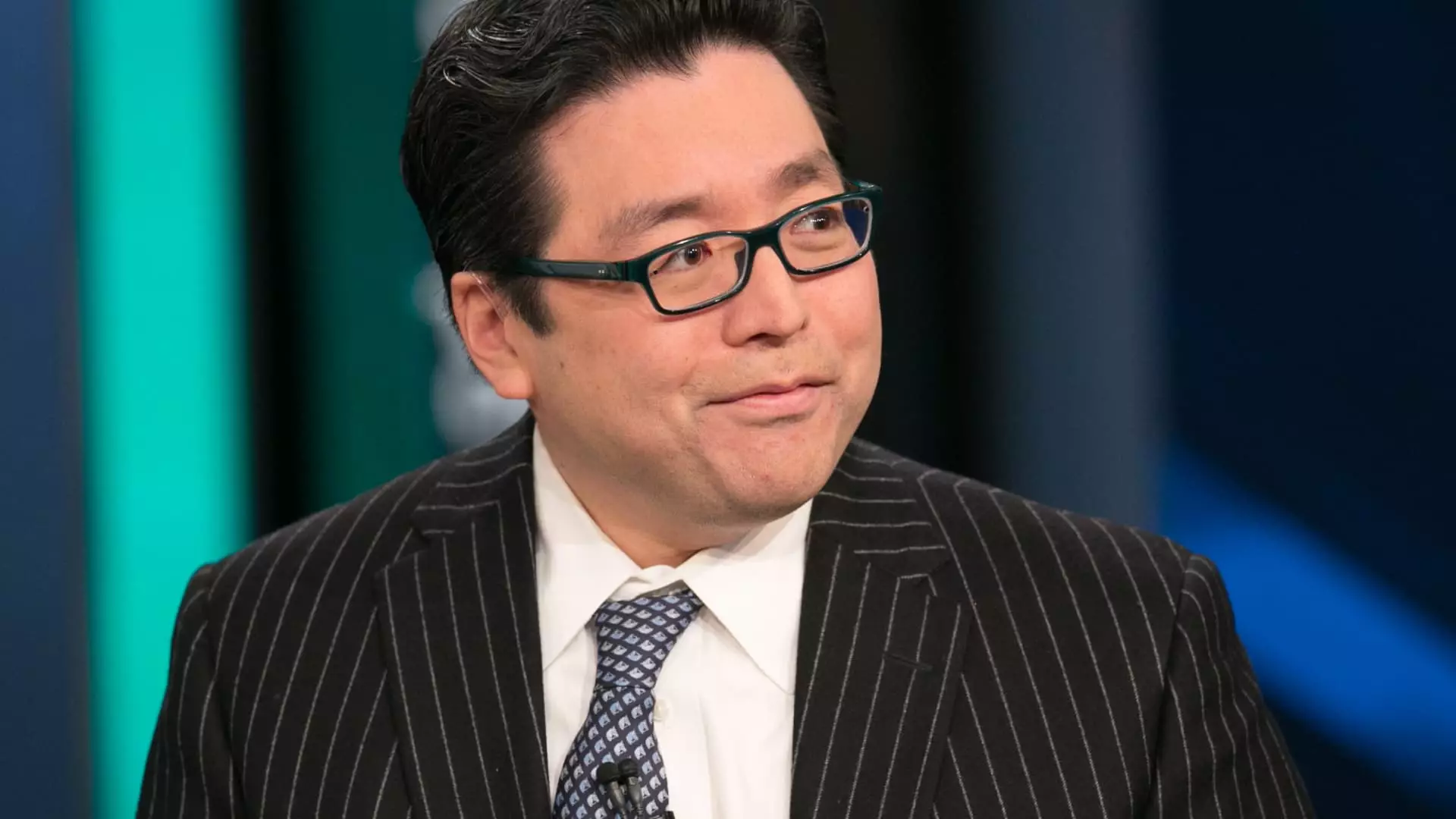The recent news of Tom Lee, Fundstrat’s renowned market strategist, stepping into the chairmanship of BitMine Immersion Technologies signals more than just a leadership change – it’s an audacious attempt to transform a niche bitcoin miner into a dominant player in the ether (ETH) space. This shift isn’t simply a reallocation of resources but a clear acknowledgment that the crypto industry’s future might no longer revolve solely around bitcoin, especially for publicly traded entities. Lee’s involvement confers credibility to BitMine, an otherwise obscure company struggling with poor market performance and minimal investor attention — with a market cap scarcely exceeding $25 million and shares languishing under heavy selling pressure.
The Growing Allure of Ethereum as a Treasury Asset
BitMine’s new strategic direction involves amassing ether as a core treasury reserve, supported by a substantial $250 million private placement to back this initiative. This maneuver reflects an emerging trend among publicly listed firms moving beyond bitcoin’s shadow in treasury management. If bitcoin was once the undisputed king of corporate crypto treasuries, ether is quickly asserting itself as a versatile alternative — largely because it powers a vibrant decentralized finance (DeFi) ecosystem and hosts the majority of stablecoin transactions. Lee’s comparison of ether’s rise to the explosive adoption of ChatGPT cleverly captures how certain technologies can become catalysts, dramatically shifting adoption curves. His optimism that ethereum stands to gain from stablecoin growth is persuasive but perhaps overlooks the intense competition ethereum faces from other layer-1 blockchains like Solana, which also attract treasury attention.
Reinventing Corporate Metrics to Drive Investor Appeal
In an era when investors crave tangible indicators of value embedded in blockchain assets, BitMine’s plan to monitor “ETH per share” as a primary performance metric is a savvy move. Borrowing a page from MicroStrategy’s bitcoin-based “BTC Yield,” this new metric aligns investor returns directly with the appreciating crypto asset held on the balance sheet, rather than purely operational mining revenues or speculative market performance. This transparent, asset-backed measurement could reignite investor interest in BitMine’s stock, provided ethereum’s valuation holds or appreciates. Yet, this strategy is not without risk. Ethereum itself is still navigating regulatory uncertainties, network upgrades, and stiff competition — any adverse event could disproportionately impact the company’s market value, especially when such a large portion of its treasury is ETH-denominated.
Contextualizing BitMine’s Move Amid Broader Crypto Legislation and Market Dynamics
Lee’s timing cannot be ignored. The crypto industry is currently riding a wave of optimism fueled by the stablecoin issuer Circle’s recent successful IPO and the advancing pace of potential stablecoin regulations through Congress. By anchoring BitMine’s future on ethereum, which underpins most stablecoin transactions, he positions the company to benefit from bipartisan, mainstream crypto adoption initiatives that could bring much-needed regulatory clarity. While one cannot dismiss the inherent volatility and speculative nature of crypto assets, BitMine’s strategy seems less like a reckless gamble and more like a calculated bet on the institutionalization of ethereum-based finance.
Yet, BitMine’s history of poor market performance and limited liquidity highlights the uphill battle ahead. Transforming a nearly forgotten bitcoin miner into a formidable crypto treasury powerhouse requires not only financial muscle but also consistent execution and investor confidence. Whether Lee’s vision will catalyze this metamorphosis remains an open question – one that illustrates the broader dilemma faced by mid-tier crypto firms in carving out sustainable niches amid fierce competition and an ever-shifting regulatory landscape.

